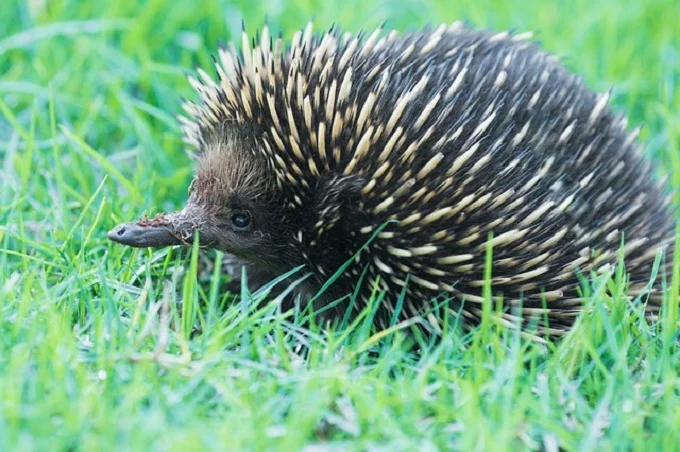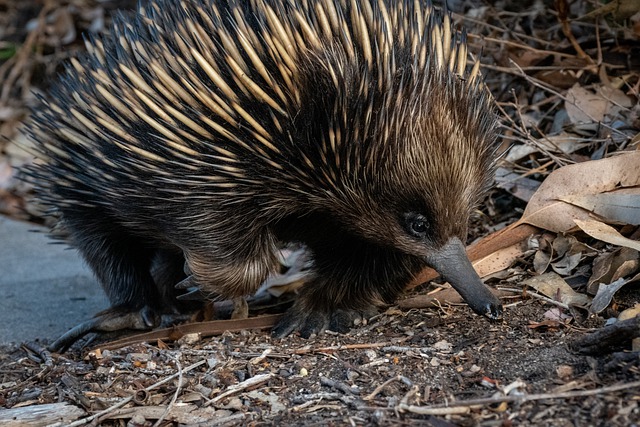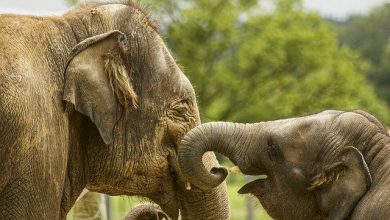Echidna: one of the strangest mammals in the world

Echidna is classified as a mammal because it is warm-blooded, has fur on its body, and provides milk for its young, and it belongs to a distinct group. The Echidna is so unlike any other animal that it continues to perplex academics and experts.
The Echidna is one of only two mammals that can lay eggs, distinguishing it from other mammals (the platypus). “Echidnas are a monotreme animal that reproduces by laying eggs. There are only five monotremes in the world: four echidna species and one platypus species. The Echidna has a distinct appearance. Although the Echidna is commonly referred to as the spiny anteater, they are not closely related to the anteater.
So, what do these creatures look like? They have a little face, small eyes, and long or short noses, to begin with. Their bodies are stocky, ranging in length from 35 to 75 cm and weighing 2 to 10 kilograms. The short-billed Echidna’s body is coated in black fur that is nearly totally concealed by hollow, toothless needles called thorns on the back and sides, but the long-billed Echidna’s body is sparsely furred, and the thorns are more evident. All echidna species have 5 centimeter-long beige and blackthorns that assist the echidna blend in with the plants. They have very short legs, which makes them great for digging.
Interesting facts about the Echidna

The short-billed Echidna is one of Australia’s most widespread animals, ranging from the highlands to deserts and woodlands throughout Australia, Tasmania, and New Guinea.
They scavenge for food
Finding food for echidnas is crucial since they devour ants, larvae, and termites. Although these creatures can wade through thickly packed dirt, they prefer areas with loose topsoil. When the Echidna discovers its victim, it buries itself in the ground with its strong, sharp claws and short, robust limbs.
They also utilize their acute sense of smell to locate food underground or under a thicket of leaves. They are thought to employ specific cells in their nose sensitive to their prey’s electromagnetic impulses – a sensation often associated with sharks. When scouting for insect colonies, the distinct aroma is quite valuable.
They have no teeth
Instead, they use their sticky, thin, long tongue to collect food. Food is turned into a paste for swallowing by hard pads at the base of the tongue and on the palate. Tachyglossus is the scientific name for the echidnas family, which means “quick tongue.”
Echidnas get its name from the Greek mother of monsters
Echidna was a half-woman, half-snake creature from Greek mythology that had the traits of both mammals and reptiles. She was also known as “the Mother of All Monsters” since she was the mother of most mythological Greek monsters.
It’s tough to tell the difference between males and females
It’s tough to tell whether an echidna is male or female merely by looking at it. Their reproductive organs are internal, and they have no gender traits. Spurs are present at birth in both men and females, but females must shed them as they grow.
Echidnas have an endothermic metabolism
They have the coldest body temperature of any animal, about 32 degrees Celsius. Because of their low body temperature and sluggish metabolism may live for up to 50 years under-regulated settings. Echidnas may go into torpor, which is a dormant condition employed by many animals to preserve energy. Echidnas go into torpor when their metabolic rate slows, and their body temperature drops.
The world’s largest flea
Echidna fleas are attracted to echidnas with small beaks (bradiopsylla echidna). It is said to be the world’s biggest flea, measuring 1.3 cm in length.
A weird nuptials practice
Echidnas breed throughout July and August. Male echidnas often form lengthy trains of up to ten echidnas behind females, snout to tail. The peculiar courting of the Echidna begins with these trains, which signal the start of the mating season. When a female is ready to mate, the males dig a trench around her in the ground. Males push each other out of the track to compete for mating rights. The last surviving one mates the female.

Puggles are the name given to cubs
Once a year, an adult female echidna lays one leathery egg. To keep a recently deposited grape-sized egg secure, it wraps it into a deep pocket (or pouch) in her abdomen. A newborn echidna known as a puggle hatches ten days later. Puggle grabs unique hairs in its mother’s pouch with her tiny transparent claws. They lack nipples, like do other mammals. Instead, the infant feeds on milk produced by specific glands in the mother’s pouch.
The puggle does not yet have projecting thorns, which is fortunate for the mother. It remains in the bag for around 53 days until its spikes begin to protrude from its skin. The puggle is placed in the burrow, where the mother comes every 5-10 days to nurse it until it is big enough at seven months.
The thorns on their heads are really hair
The echidnas’ primary line of protection against predators is their spines, which are comprised of keratin (long, strong, hollow hair follicles). If a scared echidna cannot flee or hide, it coils up into a spiky ball to defend itself or hide.
Males have spurs as well
According to scientists, male echidnas use a spur on their rear leg to communicate with other echidnas, unlike platypus, who use a spike on their leg as a weapon.
You may hold an echidna in your arms, but do so with caution
While wild creatures should never be lifted or disturbed, echidnas may be picked up if necessary. When working with snide, strong leather gloves are essential to protect your hands from the thorns.
In Australia, the short-billed Echidna is widespread and highly protected. It’s even classified as Least Concern on the Red List of Threatened Species by the International Union for Conservation of Nature (IUCN). On the other hand, long-billed echidnas have plummeted by at least 80% since the 1960s, owing to overhunting and habitat destruction. The IUCN has classified all of them as endangered.




